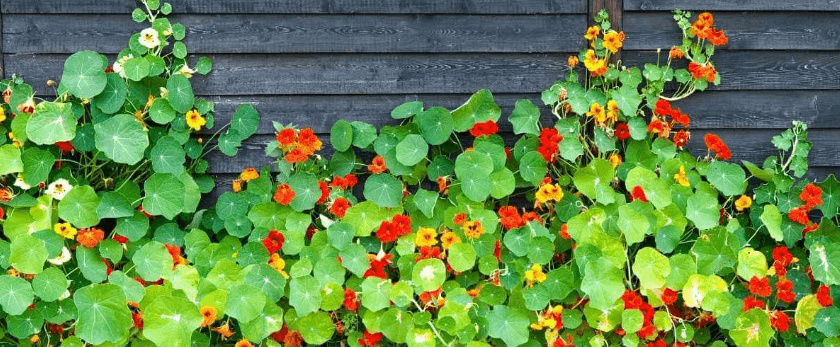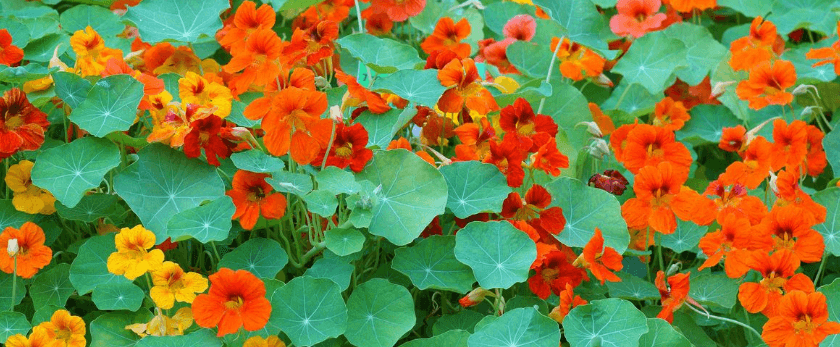Nasturtiums are beautiful, vibrant flowers that not only add a pop of color to your garden, but also have many benefits for the environment. They are easy to grow and require minimal maintenance, making them a perfect addition to any garden. In this article, we will discuss how to care for nasturtiums, the best time to grow them, and common problems you may encounter.
How to Care for Nasturtium
Watering
Nasturtiums prefer well-drained soil, so make sure to water them deeply but infrequently. This means giving them a good soak once or twice a week, rather than light watering every day. Overwatering can lead to root rot and other diseases, so it's important to find the right balance. If you're not sure when to water, stick your finger into the soil and if it feels dry, it's time to water.
Light
Nasturtiums thrive in full sun, but can also tolerate partial shade. If you live in a hot climate, make sure to provide some shade during the hottest part of the day. If you're growing them indoors, place them near a sunny window or use grow lights to provide enough light.
Soil
Nasturtiums can grow in a variety of soil types, but they prefer well-drained, slightly acidic soil. If your soil is too compact, add some organic matter such as compost or peat moss to improve drainage. Avoid using heavy fertilizers as they can cause the plant to produce more foliage than flowers.
Fertilizer
Nasturtiums are not heavy feeders and can do well without fertilizers. However, if you want to give them a boost, use a balanced fertilizer once a month during the growing season. Avoid using high nitrogen fertilizers as they can promote leaf growth instead of flowers.
Pruning
Pruning is not necessary for nasturtiums, but it can help promote more flowers and a bushier plant. If you notice any dead or damaged leaves or flowers, remove them to prevent diseases from spreading. You can also pinch off the tips of the plant to encourage branching and more flowers.

Best Time to Grow Nasturtiums
Nasturtiums are annual plants, meaning they complete their life cycle in one growing season. They can be grown from seeds or seedlings, and the best time to plant them depends on your climate.
In colder climates, it's best to plant nasturtiums after the last frost in the spring. In warmer climates, they can be planted in the fall for winter blooms. Nasturtiums can also be grown indoors year-round if provided with enough light.
Common Problems with Nasturtiums
Nasturtiums are generally pest and disease resistant, but they can still encounter some problems. Here are some common issues you may encounter and how to deal with them:
Aphids
Aphids are small, soft-bodied insects that can suck the sap from the leaves and stems of nasturtiums. They can be easily identified by their green or black color and can be controlled by spraying the plant with a strong stream of water or using insecticidal soap.
Powdery Mildew
Powdery mildew is a fungal disease that appears as a white powdery substance on the leaves and stems of the plant. It can be caused by high humidity and poor air circulation. To prevent powdery mildew, make sure to space out your plants and water them at the base to avoid getting the leaves wet.
Slugs and Snails
Slugs and snails can be a problem for nasturtiums, especially in damp and shady areas. They can eat holes in the leaves and flowers, and can be controlled by handpicking them off the plant or using organic slug and snail baits.
Caterpillars
Caterpillars can also be a nuisance for nasturtiums, as they can eat the leaves and flowers. They can be controlled by handpicking them off the plant or using organic insecticides.
Responsible Disposal Methods
When it's time to dispose of your nasturtiums, it's important to do so responsibly. Do not throw them in the trash or compost bin, as they can spread diseases to other plants. Instead, pull out the entire plant, including the roots, and dispose of it in a sealed bag. You can also burn the plant or bury it deep in the ground to prevent any diseases from spreading.
In Conclusion
Nasturtiums are not only beautiful and easy to grow, but they also have many benefits for the environment. They attract pollinators, repel pests, and can even be used in cooking. By following the tips in this article, you can successfully grow your own nasturtiums and contribute to a greener, more eco-friendly lifestyle. Remember to always dispose of your plants responsibly and enjoy the beauty and benefits of nasturtiums in your garden.










